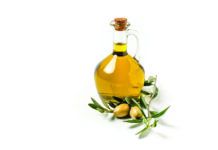Answer :Jeffrey B. Blumberg, PhD, director of the Antioxidants Research Laboratory at Tufts Jean Mayer USDA Human Nutrition Research Center on Aging, replies, There is certainly nutritional value in apple skin, as it contains a variety of phytochemicals (phytonutrients), particularly flavonoids. This is the case for the skin of most fruits and vegetables, as these compounds are phytoalexins (compounds protecting the plant from environmental stresses, like UV light, molds and insects) and so need to be on the outside of the plant to protect it. While this has not been tested, presumably leaving the skins on while making apple sauce would help retain some of the flavonoids, since these water-soluble compounds would at least partly be extracted into the sauce. Tufts Antioxidants Research Laboratory has tested a similar scenario with almond skins; like apple skins, almond skins are rich in flavonoids and related polyphenols. The researchers have found that these nutrients are readily extracted into water when the nuts are blanched.
Blumberg adds, Thermal treatment (cooking) does degrade some of the vitamins, but this typically does not present a major source of loss except in circumstances where the solvent is discarded (e.g., the water in which you boiled vegetables; in the case of blanching almonds, the skins and the water are discarded). So as long as you incorporate not only the peels but the cooking water into your finished apple sauce, you should wind up with the most nutrient-rich apple sauce possible. In any case, including the peels will certainly result in an apple sauce with more nutrients than if you discard the peels.
























